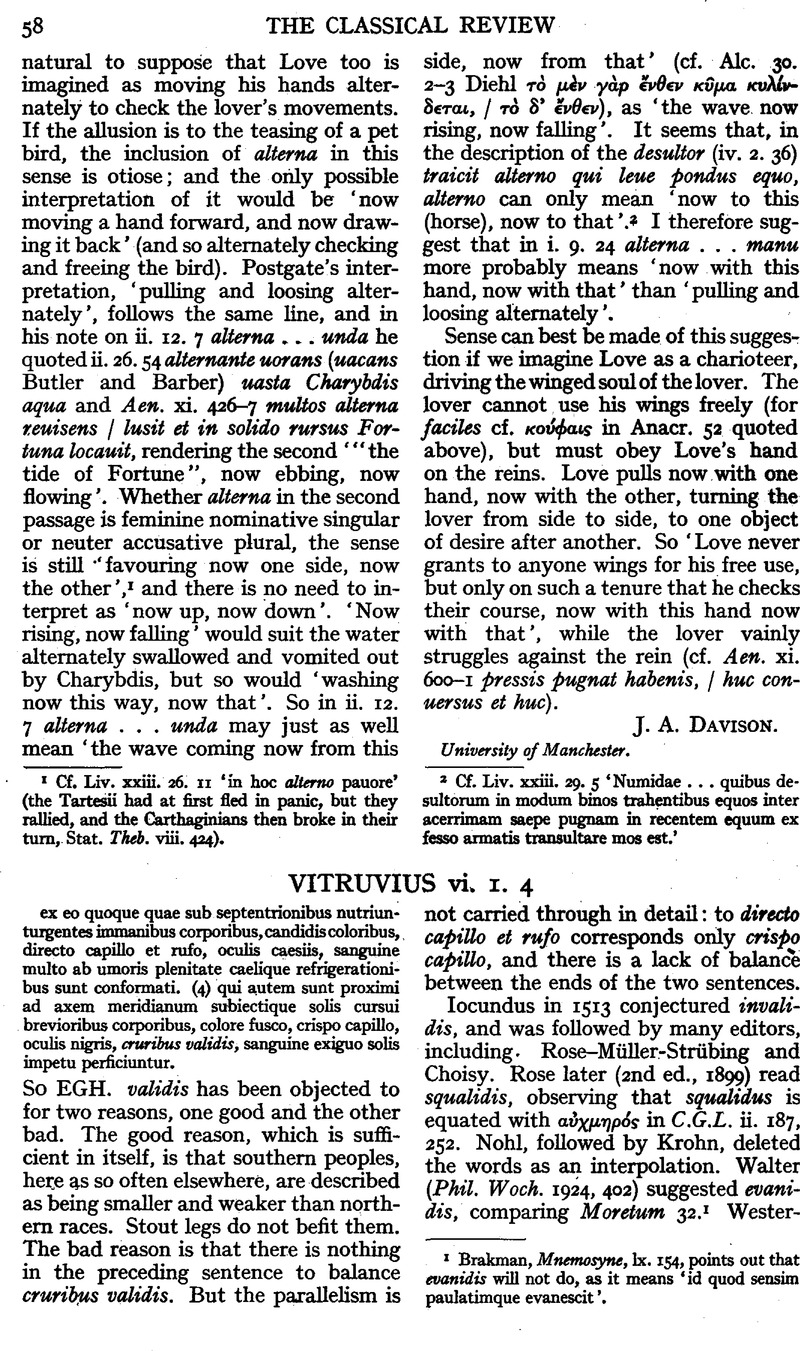No CrossRef data available.
Article contents
Vitruvius vi 1. 4
Published online by Cambridge University Press: 27 October 2009
Abstract

- Type
- Review Article
- Information
- Copyright
- Copyright © The Classical Association 1948
References
page 58 note 1 Brakman, Mnemosyne, lx. 154, points out that evanidis will not do, as it means ‘id quod sensim paulatimque evanescit’.
page 59 note 1 Schmid-Stählin, ii. 693; Premerstein, Klio, Beiheft 8 (1908), 46 ff.; Foerster, Scriptores Physiognomonici, i, pp. lxxv and lxxviii ff.
pgae 59 note 2 Cf. Hoffmann's translation of the Arabic version of Polemon, de Physiognomonia 32 ff. (Foerster, i. 238.6 ff.) ‘scias plagae septentrionalis incolas esse longos albos rubris capillis oculis glaucis aspero tactu cruribus crassis corporibus spissis obesis, carnibus teneris ventribus ingentibus praecipiti iracundia et deliberatione esse, deinde inconsiderantiam sinceritatem et discendi difficultatem habere. scias plagae meridianae incolas nigros crispis capillis angustis talis oculis stibini coloris nigris capillis exilibus carnibus benignis actionibus esse’ etc.; Adamantius, Physiognomonica 2. 31 (Foerster, i. 383. 2 ff.) ὡς δ⋯ ⋯π⋯ τ⋯ πολὺ οἱ μ⋯ν ὑπ⋯ τῇἂρκτῳ οἰκο⋯ντες εὐμηκῖς εἰσ⋯ ξανθο⋯, λευκο⋯ τ⋯ςκ⋯μας, ⋯παλ⋯τριχες, γλαυκο⋯, σιμο⋯, παχυκεῖ, περιπληθεῖς σαρκ⋯ λαγαρᾷ, προγ⋯στορες, ⋯πλοῖ, θυμοειδεῖς, ⋯λιγ⋯βουλοι, θερμ⋯βουλοι, δυσμαθεῖς, οἱ δ⋯ὑπ⋯ τῇ μεσημβρ⋯ᾳ μελαν⋯τριχες, οὐλ⋯τριχες, μελανφθαλμοι, λεπτοσκελεῖς, εὐμαθεῖς, πολυγνώμοες, κουφνοοι, Ψε⋯σται, κερδαλ⋯οι, ⋯π⋯κλοπα νο⋯ματαἔχοντες.
page 59 note 3 § 14 (Foerster, i. 28. 5).
page 59 note 4 § 16 (Foerster, i. 30. 4).
page 59 note 5 Compare the Arabic Polemon 6 (Foerster, i. 202. 17) and 7 (i. 204. 9), Adamantius 2.7 (Foerster, i. 357. 2), Anon, de Physiognomonia 71 (Foerster, ii. 90. 2), 91 (ii. 120. 10), and 105 (ii. 129. n).




